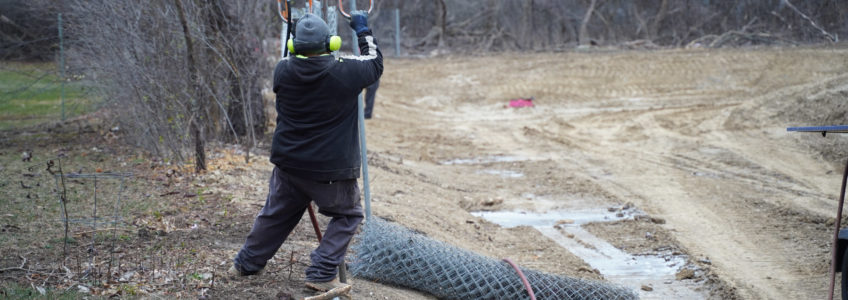
In Chicagoland, we often joke there are only two seasons: winter and construction, however the reality is construction demand doesn’t really slow all that much when the mercury drops, but the dangers of building in the cold increase. Everything from personal safety to job site security to how material and equipment respond to the bitter temperatures change. Let’s explore the dangers of construction during winter months and how to avoid them.
Personal Safety
We’ve covered this in previous posts, so we’ll keep this brief, but suffice to say, the bitter cold means we either use thin or no gloves and winter safety gear for high-dexterity tasks, or we wear warmer winter gloves & coats and fumble around less efficiently. The goal is to minimize exposure to bare skin and keep body temperature up. Dropping some electric or chemical hand warmers in your pockets and taking short breaks to thaw out between tasks can keep you working, but ultimately you’ll want to increase the frequency of breaks to a warm truck or indoors, covering your ears and face as much as possible while exposed.
Jobsite Hazards
We’re all familiar with the beautiful—then annoying snow that falls. We love that first fall, then it quickly turns to mud or ice. The danger on the job site is if any material or waste was left out and is covered by the fresh powder. Trudging around or moving equipment can quickly lead to injuries or equipment damage. The simple resolution is to maintain a tidy job site; keep waste in a dumpster or a dedicated part of the property, out of the way of foot and equipment traffic.
Thermal Changes to Materials
Similar to how you aren’t as flexible in the cold, most building materials also respond to changes in temperature, making it more brittle, or in some cases, weakens it with excessive moisture. If you’re working with metal or organic materials, be sure to either allow it to warm indoors before expecting normal flection in bends, or simply have the expectation you’ll have to move a bit slower and more methodically to avoid damaging the material as you prepare it for installation.
If you’re planning some exterior projects or need additional security on your job site, call or visit our quote request page to get pricing on temporary fence rentals, silt fence, and other rental fence accessories, all of which can be installed year-round.






